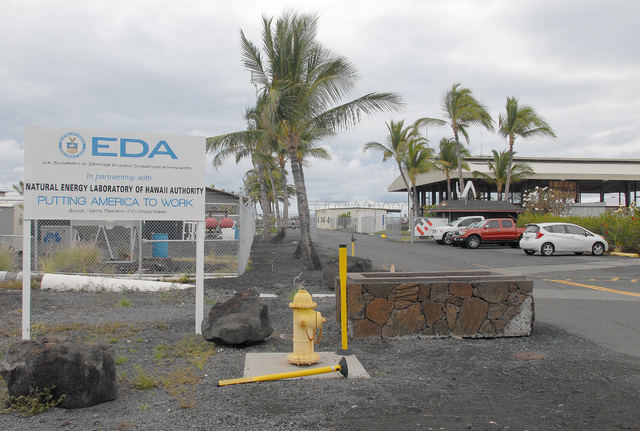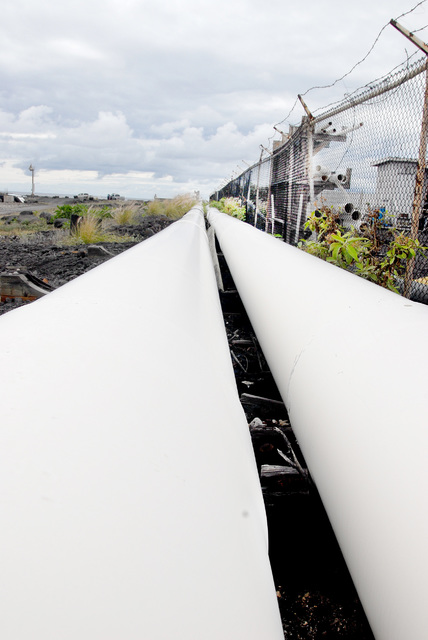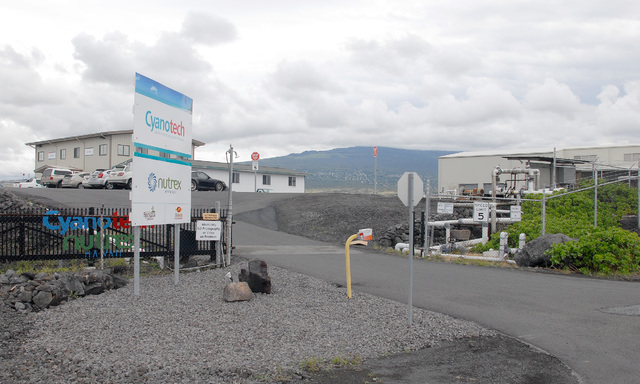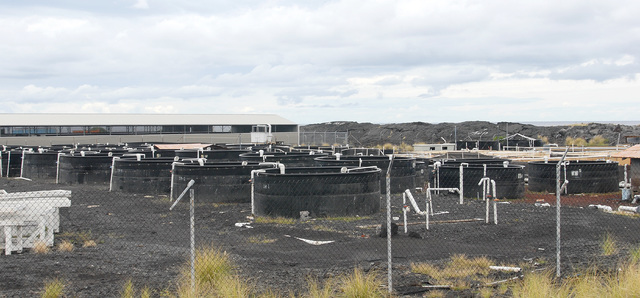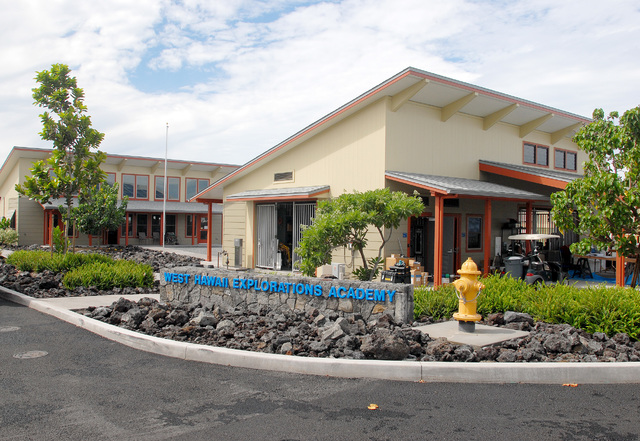The Natural Energy Laboratory of Hawaii Authority’s economic impact on Hawaii increased significantly from 2010 to 2013, University of Hawaii Economic Research Organization researchers found.
Moreover, a higher percentage of the money being expended by the facility’s tenants is staying in-state.
The North Kona-based ocean science and technology park had $123 million in economic impact on the State of Hawaii in 2013, according to the report, which is an analysis of the area’s economic impact that looks at how tenants’ expenditures reverberate through the economy. The UHERO researchers determined the figure using the state’s economic input-output model, which captures the direct, indirect and induced impacts of spending in each sector of Hawaii’s economy.
In 2010, NELHA’s economic impact was estimated at $87.7 million across the state.
“That’s incredible. Forty percent in three years,” NELHA Executive Director Greg Barbour told West Hawaii Today on Thursday. “I just can’t believe it.”
The increase in economic impact on Hawaii corresponds with an increase in the amount tenants spent in 2013 to operate. That year, 37 entities spent $98.8 million to operate, of which 73 percent — or $72 million — stayed in-state. That’s up from 2010 when $43.7 million of the $81 million spent stayed in-state. The remainder was spent nationally or internationally. The report does not break down spending by county or country.
Barbour attributed the increase in economic impact and expenditures to a variety of factors, among them the turnaround in the economy since 2010, which was the year the 2012 report assessed, and investments — to the tune of $60 million by tenants and NELHA during the past two years — by tenants and NELHA at the facility located off Queen Kaahumanu Highway.
“In 2013, you’re seeing a lot of new investment, so, I think some of it is capturing some of the increases because of some of the pent up demand,” Barbour said. “We’ve tried to really show a positive attitude and attract new business and I think that’s a big part of it as well.”
He also noted the positive numbers could be indicatrive of the facility being in the right place at the right time.
“If you’re going to be in any space, right now, green, renewable energy, sustainable technologies (is it), and that’s what the whole park is focused on. So, were at the right place at the right time” Barbour explained. “You’re seeing this interest in developing these technologies and we’re an outdoor demonstration site for those technologies, that’s definitely helping us.”
The report is based on tenants self-reporting 2013 expenditures via survey. Of the 37 tenants at NELHA, 20 completed surveys. For the nonresponding tenants, UH estimated expenditures using prior income statements for five of the tenants and estimated income for three. Nine were deemed “relatively small” and were not included in the estimation.
UHERO said it specifically assessed 17 spending categories, among them rent, equipment, finance and insurance, materials, utilities, information, transportation, repair and maintenance, professional services, taxes, and labor.
With all of that data, researchers determined tenants spent $98.8 million to operate in 2013, of which $72 million stayed in-state. From there, they extrapolated the direct, indirect and induced economic impact was $123 million based on multipliers determined by the state Department of Business, Economic Development and Tourism.
The tenants also generated $5 million in tax revenue for the state.
The report also showed the money spent by the tenants contributed to 617 jobs statewid with earnings totaling $28.9 million. Barbour did not know the exact number of jobs within NELHA, but estimated it at about 400 positions.
Looking toward the future, Barbour was hesitant to speculate on new investments and tenants at the facility, but did say he expects that NELHA will provide more jobs in the Kona community.
“The jobs number only increased by six percent when all of this other investment is coming,” said Barbour. In 2010, the report found NELHA’s tenant spending contributed to 583 jobs in the state.
“These people are just making these investments now and finishing expansion … but they haven’t started hiring yet, so, there’s a little bit of a lag,” he said. “I anticipate higher growth in jobs, for sure.”
The current economic impact report is the second such released for NELHA. In 2012, UHERO released its first report on the facility’s economic impact finding its impact on Hawaii alone was $87.7 million in 2010. That figure was based on Hawaii-only expenditures of $47.3 million, according to the 2012 report.
The report is expected to be compiled every three years, Barbour said.
The Natural Energy Laboratory of Hawaii Authority, located at Keahole Point, administers the facility, which sits on 870 acres of leased state land.
NELHA was established in 1974 with public and private grants in response to the 1973-74 oil embargo and concerns about Hawaii’s fossil fuel dependence. By 1984, it became apparent seawater could be used for research and other profitable ventures prompting the state to pass laws allowing NELHA to host commercial entities on state property as well as develop the Hawaii Ocean Science and Technology Park.
Natural Energy Laboratory Hawaii and the park officially merged in 1990 forming NELHA.






